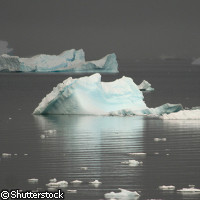Polar researcher highlights urgent need for more data
In spite of the rapid environmental changes taking place in the Arctic, and the importance of the polar ice cap in regulating the climate, we still know frighteningly little about the processes behind ice formation on the roof of the world. One of the researchers seeking to add to our understanding of the far north is Professor Nalân Koç. Originally from Turkey, she has spent most of her working life at the other end of Europe, in Norway, where she currently heads up the Polar Climate Programme at the Norwegian Polar Institute (NPI) in Tromsø. In an interview with CORDIS News, Professor Koç explained what she and her colleagues worldwide are doing to enhance our knowledge of the polar climate and set out some of the most urgent questions facing polar researchers today. Professor Koç highlighted the fact that the Arctic is warming much faster than the rest of the world, and the rate of warming is accelerating. One reason for this is the positive feedback loops set up by the shrinkage of the polar ice cap. The white surface of the ice reflects most of the sun's energy back out into space. When the ice melts, the dark ocean surface that takes its place absorbs most of the incoming solar energy, causing the seas to get warmer and more ice to melt. As more ice melts, even more energy is absorbed. In its most recent report, issued in 2007, the IPCC (Intergovernmental Panel on Climate Change) predicted that the Arctic would be ice free in summer by 2080. Since then, both the extent and thickness of the polar ice sheet have fallen dramatically, forcing scientists to rapidly revise their predictions; some believe the ice sheet could be gone in as little as five years if this rate of melting continues. This raises the question of why computer models of the climate failed to predict this rapid decline. In fact, climate models are relatively poor at predicting the polar climate; while most models agree on what will happen up to 60 degrees north (in line with southern Scandinavia), there is little agreement about what will happen closer to the pole. 'This is because Arctic climate processes are not as well studied or understood,' explained Professor Koç. The Arctic's remoteness and harsh environment make carrying out research there logistically difficult and expensive. The NPI is involved in a range of initiatives gathering information on the Arctic, including the EU-funded DAMOCLES ('Developing Arctic modelling and observing capabilities for long-term environmental studies') project, which is gathering much-needed data on the Arctic environment and processes taking place at the ocean surface where sea, ice and atmosphere interact with one another. 'The NPI is working on high-latitude surface processes so that we can give modellers the right formulae so that their models will perform better,' said the professor. Among other things, she added, we need to improve our classification of different types of ice and snow, and investigate how they influence the reflectivity of the ice pack. We also need to enhance our knowledge of exactly how sea ice starts to grow and what causes it to melt. So what are the most urgent questions that scientists need to address? Topping Professor Koç's wish list is a better understanding of sea-ice and snow processes; this will help us to improve the accuracy of parameters entered into climate models. Second is the need for more information on glacier dynamics: glaciers in the Arctic are melting fast, but the glaciers in climate models tend to be static because scientists lack the data needed to model them accurately. Another issue high on the researcher's agenda is the Gulf Stream. Data shows that the salinity of the Arctic Ocean is declining, and Siberian rivers are likely to discharge even more freshwater into polar waters in the future. This change in salinity may well affect the Gulf Stream but we do not know how or what the thresholds are as yet. Nevertheless, as researchers gather data, the Arctic continues to change. Together with the Alfred Wegener Institute in Germany, the NPI is studying changes in the Fram Strait, where warmer water from the Atlantic flows into the Arctic and cold water flows out. 'Since 1984, Atlantic water flowing into the Arctic has got 2°C warmer,' notes Professor Koç, adding that the temperature of the water flowing out of the Arctic has risen by a similar amount. Furthermore, for the last three winters the fjords in the Norwegian Svalbard Archipelago have been ice free. The change was sudden; in preceding years, the fjords had a good coverage of ice. According to Professor Koç, the phenomenon is due to changes in atmospheric circulation forcing warmer water from the Atlantic into the fjords year round. The challenge now is to determine whether this change is due to climate change. Ice and sediment cores can help us see how the climate changed in the past. 'We need to do a lot of monitoring to extend our records into the future,' concluded Professor Koç.
Countries
Norway



